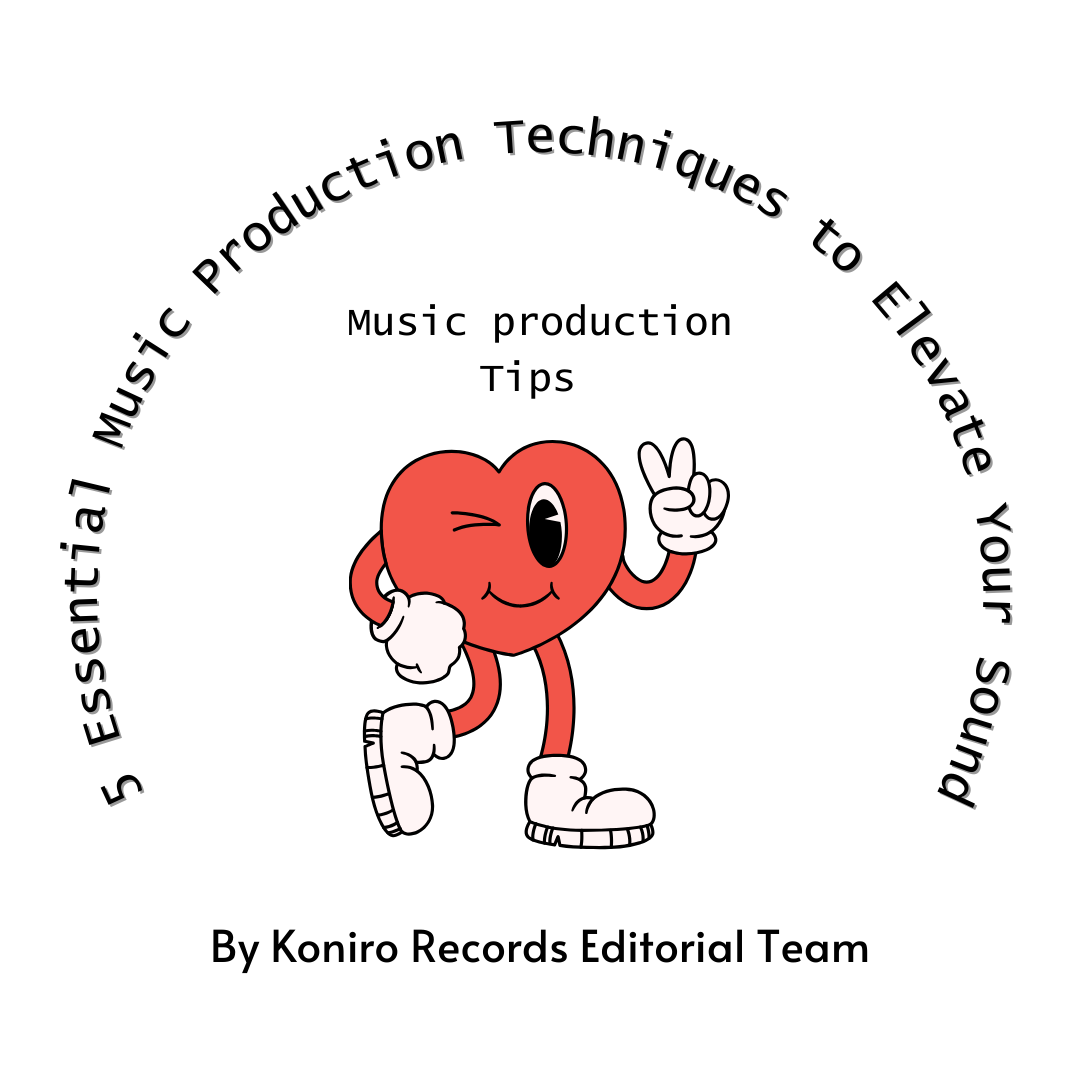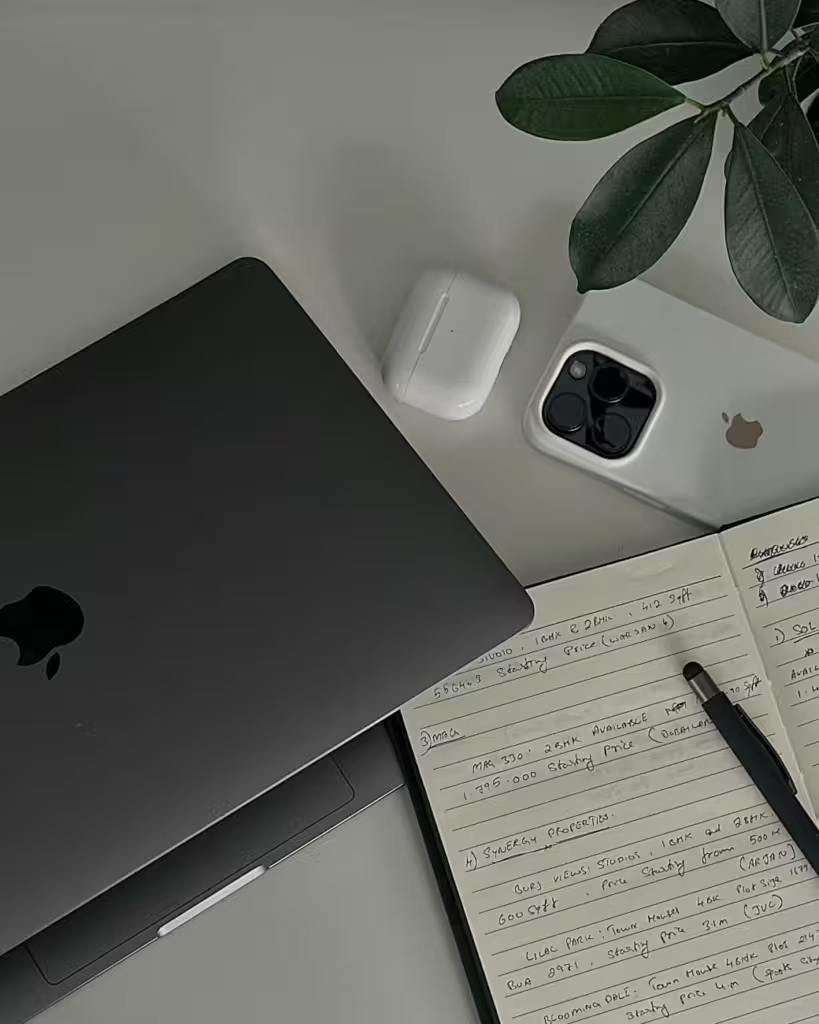Your cart is currently empty!

5 Essential Music Production Techniques to Elevate Your Sound
•

Introduction
As a music producer, staying ahead of the curve requires continuous learning and adaptation. With new technologies and software emerging every day, it can be overwhelming to keep up with the latest trends and techniques. However, refining your craft and staying focused on the fundamentals is key to producing high-quality music that resonates with listeners.
In this post, we’ll dive into five essential music production techniques to take your sound to the next level. From layering drums to creative compression, these tips will help you refine your craft and stand out in a crowded industry.

Mentorships
Unlock your full potential with Koniro Records’ mentorship programs, designed for aspiring and established artists alike. Our tailored mentorship services provide personalized guidance in music production, songwriting, branding, and industry navigation. Whether you’re just starting out or looking to refine your craft, our programs—ranging from Beginner to Elite levels—offer expert advice, hands-on training, and insider tips to help you succeed. Join our mentorship community and take the next step in your music career with the support of experienced professionals in the urban music scene.
- Layering Drums for Depth and Texture
Layering drums is a simple yet effective technique to add depth and texture to your tracks. By combining multiple drum sounds, you can create a unique sonic signature that sets your music apart.
Why Layering Drums Matters
Layering drums allows you to:
Add weight and power to your kick drum
Create a more Complex and interesting snare sound
Add ambiance and atmosphere to your drum pattern
How to Layer Drums
To layer drums effectively, start by creating a basic drum pattern using a single sound. Then, duplicate the track and experiment with different drum sounds to add depth and texture. Try combining a deep, booming kick with a bright, snappy snare, or adding a layer of ambient percussion to add atmosphere.
- Creative Compression Techniques
Compression is a crucial element of music production, and understanding how to use it creatively can make all the difference in your sound.
Why Compression Matters
Compression helps to:
Even out dynamic range and control volume levels
Add punch and energy to your tracks
Create a sense of space and ambiance
How to Use Compression Creatively
To use compression creatively, try experimenting with different ratios, attack, and release times to create unique textures and dynamics. For example, using a high ratio and fast attack time can create a pumping, energetic sound, while a low ratio and slow release time can create a more subtle, ambient effect.

- Sound Design Essentials
Sound design is the process of creating unique and interesting sounds from scratch. By incorporating sound design into your music production workflow, you can create a sonic signature that truly sets you apart.
Why Sound Design Matters
Sound design allows you to:
Create unique and interesting textures and timbres
Add depth and complexity to your tracks
Stand out in a crowded industry
How to Get Started with Sound Design
To get started with sound design, try experimenting with different techniques such as:
Frequency modulation
Ring modulation
Granular synthesis
“Koniro records was a lifesaver and helped me improve my sound quality and overall self esteem” – Beatmaster X
- Advanced EQ Techniques
EQ is a crucial element of music production, and understanding how to use it effectively can make all the difference in your sound.
Why EQ Matters
EQ helps to:
Balance and refine your mix
Create space and separation between instruments
Enhance and accentuate specific frequencies
How to Use EQ Creatively
To use EQ creatively, try experimenting with different techniques such as:
Boosting and cutting specific frequencies to create space and separation
Using narrow Q values to target specific frequencies
Using EQ to create a sense of width and stereo image.
-
 Consistency Beats Talent: The Music Industry's Secret
Consistency Beats Talent: The Music Industry's Secret -
 The Psychological Barriers Holding Musicians Back (And How to Overcome Them)
The Psychological Barriers Holding Musicians Back (And How to Overcome Them) -
 The Shocking Truth About Making It in the Music Industry (What They Don't Want You to Know)
The Shocking Truth About Making It in the Music Industry (What They Don't Want You to Know) -
 Elevate Your Musical Journey: Koniro Records' Online Course for Aspiring Musicians
Elevate Your Musical Journey: Koniro Records' Online Course for Aspiring Musicians -
 How to Build Your Brand as an Independent Musician: 5 Key Steps
How to Build Your Brand as an Independent Musician: 5 Key Steps
- Experimenting with Reverb and Delay
Reverb and delay are two of the most powerful effects in music production, and understanding how to use them effectively can add depth and complexity to your tracks.
Why Reverb and Delay Matter
Reverb and delay help to:
Create a sense of space and ambiance
Add depth and complexity to your tracks
Enhance and accentuate specific instruments
How to Use Reverb and Delay Creatively
To use reverb and delay creatively, try experimenting with different techniques such as:
Using reverb to create a sense of width and stereo image
Using delay to create a sense of rhythmic interest and complexity
Experimenting with different types of reverb and delay such as plate, hall, and room.
Conclusion
Elevating your sound and standing out in a crowded industry requires continuous learning and adaptation. By mastering these five essential music production techniques, you can refine your craft and produce high-quality music that resonates with listeners. Remember to always keep learning, experimenting, and pushing the boundaries of what’s possible in music production.
-
 Consistency Beats Talent: The Music Industry's Secret
Consistency Beats Talent: The Music Industry's Secret -
 The Psychological Barriers Holding Musicians Back (And How to Overcome Them)
The Psychological Barriers Holding Musicians Back (And How to Overcome Them) -
 The Shocking Truth About Making It in the Music Industry (What They Don't Want You to Know)
The Shocking Truth About Making It in the Music Industry (What They Don't Want You to Know) -
 Elevate Your Musical Journey: Koniro Records' Online Course for Aspiring Musicians
Elevate Your Musical Journey: Koniro Records' Online Course for Aspiring Musicians -
 How to Build Your Brand as an Independent Musician: 5 Key Steps
How to Build Your Brand as an Independent Musician: 5 Key Steps
Discover more from Koniro Records | Proudly independant
Subscribe to get the latest posts sent to your email.